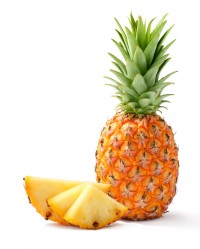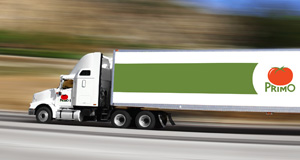
May 25- May 31, 2014
Market Outlook
Lettuce:
The Iceberg market is higher as shippers are struggling to meet demand. Quality has been fair to good on inbound. We are seeing minor fringe burn on some lots on inbound.
Leaf:
Romaine and all leaf products are much higher as products are coming up short. Quality has been good overall. We are seeing occasional minor tip/fringe burn on inbound.
Broccoli:
Broccoli market is steady with good quality out of Salinas.
Cauliflower:
The cauliflower market is unsettled, but remains at higher levels. Quality has been good.
Carrots:
Carrot market is steady to higher. We are sourcing product out of Mexico. Georgia is struggling with quality issues.
Celery:
The Celery market is steady to higher out of Oxnard. Quality has been good overall.
Strawberries:
We are seeing fair to good quality out of California with a steady market.
Potatoes:
Market has been moving about twice a week now on all size potatoes. Market is very strong and will keep moving upward for the rest of the season.
Onions:
The market on new crop yellow onions has remained steady for this week, quality has been very good. Red onions are steady this week.
Citrus:
The Lemon market is steady to higher. Orange market is steady overall. Quality has been good. Lime market is coming down from the very high levels we have seen in recent weeks.
Cucumbers:
The Cucumber market in Florida as tightened up with very high pricing. Product is tight and trucks are limited.
Peppers:
Pepper market has also taken a big jump with product tight and trucks also very limited.
Tomatoes:
Round Tomato market is much higher. Grapes, romas, and cherries are higher as well, but not strengthening as rapidly as round tomatoes. Overall, quality has been good.
Transportation costs are at higher levels due to the holiday pull. This is contributing to higher overall landed costs on many items from several growing regions.
Feature of the Week
This week Primo is featuring pineapple. The golden color and sweet flavor of pineapple work wonderfully in both desserts and savory dishes. Pineapple is the common name for an edible tropical plant and also its fruit. It is native to the southern part of Brazil, and Paraguay. It grows to 1–1.5 meters tall with 30 or more trough-shaped and pointed leaves 30–100 cm long, surrounding a thick stem. The pineapple is an example of a multiple fruit: multiple, spirally-arranged flowers along the axis each produce a fleshy fruit that becomes pressed against the fruits of adjacent flowers, forming what appears to be a single fleshy fruit. Pineapple is commonly used in desserts and other types of fruit dishes, or on its own. Pineapples are the only bromeliad fruit in widespread cultivation.
Recipe of the Week
Sweet and Savory Baked Chicken with Pineapple and Tarragon
Ingredients
4 sprigs fresh tarragon (2 sprigs chopped, 2 whole sprigs for roasting), plus more for garnish
Coarse salt and freshly ground pepper
1 whole chicken (about 4 1/2 pounds), cut into pieces
2 cups chopped fresh pineapple
8 shallots (2 coarsely chopped, 6 halved lengthwise)
2 tablespoons rice-wine vinegar
1/2 teaspoon sugar
1 tablespoon unsalted butter
Step 1
Preheat oven to 425 degrees. Stir chopped tarragon, 1 teaspoon salt, and 1/4 teaspoon pepper in a small bowl. Rub mixture all over chicken. Transfer to a large roasting pan, arranging chicken so pieces are not touching. Refrigerate until ready to bake (up to 1 day).
Step 2
Put pineapple, chopped shallots, vinegar, sugar, and 1/2 teaspoon salt into a food processor. Process until mixture is slightly chunky, about 2 minutes.
Step 3
Spread pineapple mixture over chicken. Top with dabs of butter. Add the remaining tarragon sprigs and 6 shallots to roasting pan. Bake chicken, basting with pan juices occasionally, until skin is golden, about 50 minutes.
Fun Facts of the Week
- It takes almost 3 years for a single pineapple to reach maturation.
- You can plant your own pineapple plant by cutting off the top of a pineapple and planting it in soil
- Once harvested, pineapples don’t continue to ripen
- Pineapple cores contain high levels of bromelain, a proteolytic enzyme, which has a whole slew of health benefits


